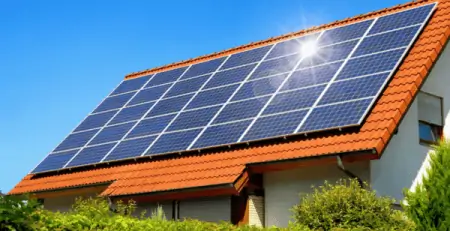Current pricing trends in the solar panel market
Solar energy has gained significant momentum in recent years due to its renewable and sustainable nature. As a result, the demand for solar panels, which convert sunlight into usable electricity, has seen a substantial rise. However, the solar panel market is not without its complexities, and pricing trends play a crucial role in its growth and adoption. In this article, we will explore the current pricing trends in the solar panel market and how they vary regionally.
Solar panels, also known as photovoltaic (PV) modules, are devices that harness solar energy and convert it into electrical power. They consist of interconnected solar cells that absorb photons from sunlight and generate an electric current. Solar panels are a key component of solar energy systems and have become increasingly popular in residential, commercial, and utility-scale applications.
Solar energy offers numerous benefits, including reduced reliance on fossil fuels, lower greenhouse gas emissions, and potential cost savings on electricity bills. As a result, the solar panel market has witnessed significant growth in recent years. However, understanding the pricing trends in this dynamic market is essential for consumers, businesses, and policymakers alike.
2. Factors Influencing Solar Panel Prices
Several factors influence the prices of solar panels. It’s important to consider these factors to understand the dynamics of the market and the variations in pricing across different regions.
2.1 Manufacturing costs
The manufacturing costs of solar panels have a direct impact on their prices. Factors such as the cost of raw materials, labor, research and development, and economies of scale play a crucial role in determining manufacturing costs. Advances in manufacturing processes and increased production volumes can help reduce costs over time.
2.2 Technology advancements
Technological advancements in solar panel manufacturing and design contribute to pricing trends. Improvements in cell efficiency, durability, and aesthetics can increase the cost of panels initially. However, as these technologies become more mainstream and widely adopted, economies of scale often lead to price reductions.
2.3 Government Policies and Incentives
Government policies and incentives can significantly impact the pricing of solar panels. Subsidies, tax credits, feed-in tariffs, and net metering programs can make solar panel installations more affordable for consumers and businesses. Changes in government policies or the introduction of new incentives can influence the demand for solar panels and, consequently, their prices.
2.4 Supply and demand dynamics
Supply and demand dynamics also play a crucial role in determining solar panel prices. If the demand for solar panels exceeds the available supply, prices tend to rise. Conversely, if supply surpasses demand, prices may decrease. Factors such as global energy demand, environmental concerns, and market competition contribute to the supply and demand dynamics in the solar panel market.
3. Global Solar Panel Market Overview
The global solar panel market has experienced significant growth in recent years. Increasing environmental awareness, government support for renewable energy, and declining costs have contributed to the market’s expansion. Several major players dominate the industry, including manufacturers, suppliers, and installers.
4. Pricing Trends in the Solar Panel Market
Solar panel prices have exhibited both fluctuations over time and variations across different regions. Understanding these pricing trends is crucial for potential buyers and industry stakeholders.
4.1 Price fluctuations over time
The prices of solar panels have witnessed a downward trend over the past decade. Technological advancements, economies of scale, and increased competition have led to cost reductions. However, fluctuations can occur due to factors such as changes in raw material prices, supply chain disruptions, or shifts in government policies and incentives.
4.2 Regional variations in prices
Solar panel prices can vary significantly across different regions. These variations arise from factors such as local market conditions, government regulations, manufacturing capabilities, and solar resources. Understanding the regional pricing dynamics is essential for making informed decisions regarding solar panel installations.
4.3 Impact of market competition
Market competition among solar panel manufacturers and installers can influence pricing trends. Intense competition often leads to price reductions as companies strive to gain market share. Additionally, technological advancements and innovative business models can contribute to price competitiveness in the market.
5. Factors Affecting Regional Pricing
Several factors influence regional pricing disparities in the solar panel market. These factors take into account the unique characteristics and conditions of each region.
5.1 Solar Resources and Potential
Regions with abundant sunlight and favorable climatic conditions for solar energy generation often experience lower solar panel prices. Higher solar potential allows for greater energy production, which can drive economies of scale and reduce installation costs.
5.2 Local manufacturing capabilities
The presence of local solar panel manufacturing facilities can impact regional pricing. Regions with well-established manufacturing capabilities may offer lower prices due to reduced transportation and import costs. On the other hand, regions heavily reliant on imports may experience higher prices.
5.3 Government Regulations and subsidies
Government regulations and subsidies vary across regions and can significantly influence solar panel prices. Supportive policies, such as tax incentives, feed-in tariffs, or grants, can lower the upfront costs of solar panel installations, making them more affordable for consumers.
6. Pricing Trends in Different Regions
Solar panel prices exhibit variations across different regions. Let’s explore the pricing trends in some key regions:
6.1 North America
In North America, solar panel prices have seen a decline in recent years. The United States has experienced a significant increase in solar installations, driven by supportive policies at the federal and state levels. Competition among manufacturers and installers has also contributed to price reductions.
6.2 Europe
Europe has been at the forefront of solar energy adoption, with countries like Germany and Spain leading the way. The region has witnessed a decline in solar panel prices due to strong government support and favorable regulatory frameworks. However, pricing trends may vary among European countries based on local market conditions and policies.
6.3 Asia-Pacific
The Asia-Pacific region, particularly China, has emerged as a major player in the solar panel market. China’s dominance in solar panel manufacturing has resulted in competitive pricing. Other countries in the region, such as India and Australia, have also seen a surge in solar installations, leading to increased competition and price reductions.
6.4 Latin America
Latin America has shown immense potential for solar
panel installations. Countries like Mexico, Brazil, and Chile have implemented supportive policies to promote renewable energy. As a result, solar panel prices have become more affordable, encouraging widespread adoption in the region.
6.5 Middle East and Africa
The Middle East and Africa region has vast solar resources, making it an attractive market for solar energy. Countries like Saudi Arabia, UAE, and Morocco have ambitious renewable energy targets and are investing heavily in solar power projects. The growing demand and government initiatives have contributed to price reductions in the region.
7. Cost-Effective Strategies for Solar Panel Installation
While solar panel prices have become more affordable, it’s essential to consider cost-effective strategies for installation to maximize the benefits. Here are a few strategies to consider:
7.1 Comparison of different solar panel types
Different types of solar panels, such as monocrystalline, polycrystalline, and thin-film, have varying costs and efficiencies. Conducting a thorough analysis of the available options can help determine the most cost-effective solution based on specific needs and budget.
7.2 Financing options
Various financing options, such as solar loans, leasing, or power purchase agreements (PPAs), can make solar panel installations more accessible and affordable. Exploring these financing options and understanding their long-term implications can help minimize upfront costs.
7.3 Maintenance and operational costs
Considering the maintenance and operational costs over the lifetime of solar panels is crucial for a cost-effective installation. Opting for high-quality panels, monitoring systems, and regular maintenance can ensure optimal performance and maximize the return on investment.
8. Future Outlook and Predictions
The solar panel market is poised for continued growth in the coming years. Advancements in technology, increased economies of scale, and supportive government policies are expected to drive further price reductions. As the demand for renewable energy rises, solar panels are likely to become even more affordable and accessible to a wider range of consumers.
Furthermore, innovations such as solar energy storage and integration with smart grid systems are anticipated to transform the solar panel market. These advancements can enhance the efficiency and reliability of solar power, making it an increasingly attractive option for both residential and commercial applications.
9. Conclusion
Solar panel prices have been on a downward trajectory, making solar energy more accessible and cost-effective. Regional pricing variations depend on factors such as solar resources, manufacturing capabilities, and government policies. As the solar panel market continues to grow, it is essential to stay updated on pricing trends and explore cost-effective strategies for installation.





